Leonardo da Vinci had the world’s most observant and creative mind. With an estimated IQ well over 190 — probably 200+ — da Vinci was a true, versatile Renaissance man. He was far ahead of his time in art, anatomy, architecture, engineering, mathematics, and many other disciplines. Few came even close to Leonardo’s prolific output of artistic masterpieces and scientific discoveries. And many deeply pondered the astounding secret behind Leonardo da Vinci’s creative genius.
Author Leonard Shlain spent years exploring da Vinci’s work and analyzing what made him so outstanding. In the book Leonardo’s Brain: Understanding da Vinci’s Creative Genius, Shlain makes an excellent case that Leonardo da Vinci was biologically different from practically all other humans. According to Shlain, da Vinci’s brain was the perfect balance of right and left hemispheres. It was because of a one-of-a-kind abnormality in Leonardo da Vinci’s corpus callosum—the part of the brain responsible for controlling analytical left-brain observation and right-brain creativity.
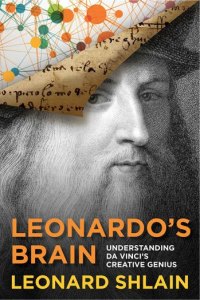 In Understanding da Vinci’s Creative Genius, Leonard Shlain did what he calls a “postmortem brain scan”, seeking to illuminate the exquisite wiring inside Leonardo da Vinci’s head. It’s an in-depth psychological/neurological profile about what’s known of da Vinci’s phenomenal behavior and the ingenuity of his works. At the end of this fascinating book, Shlain concludes that Leonardo da Vinci’s brain was so advanced that his understanding of all things in nature and his grip on personal creative ability allowed him to access unique ways of thought.
In Understanding da Vinci’s Creative Genius, Leonard Shlain did what he calls a “postmortem brain scan”, seeking to illuminate the exquisite wiring inside Leonardo da Vinci’s head. It’s an in-depth psychological/neurological profile about what’s known of da Vinci’s phenomenal behavior and the ingenuity of his works. At the end of this fascinating book, Shlain concludes that Leonardo da Vinci’s brain was so advanced that his understanding of all things in nature and his grip on personal creative ability allowed him to access unique ways of thought.
Shlain postulates that da Vinci saw universal interconnectedness in everything… everywhere. Biologically advantaged by some quirk of nature, da Vinci elevated his mind to a higher state of consciousness than achieved by other people. Leonardo da Vinci—according to author Leonard Shlain—evolved into a superhuman.
— — —
Genetically, there didn’t appear to be anything special about Leonardo da Vinci. He was born out of wedlock in 1452 at the Italian town of Vinci in the Florence region. His mother was a peasant and his father was a notary—somewhat of a playboy. Infant and toddler Leonardo was raised by his mother and neglected his father who only supplied modest child support.
Because Leonardo da Vinci came from low class, he wasn’t eligible for a formal education as were nobility associated with the church and state. In fact, da Vinci had no conventional schooling as a youth. He wasn’t able to learn the “secret code” associated with the education of the time. That was learning to speak, read and write Latin and Greek which unlocked the doors to classical learning. Without knowing these two prominent languages, it was practically impossible for da Vinci to conventionally participate in making the Renaissance.
Leonardo da Vinci was taken from his dysfunctional mother at age 5 or 6. His kindly uncle Francesco did the best he could to provide for the boy. Regardless of his lack of formal schooling, da Vinci showed a remarkable curiosity and intellectual ability right from a young age. He seemed “gifted” and was able to visualize abstracts including art forms and mathematical equations far beyond normality. Soon, the Florentine painter and artistic leader Andrea del Verrocchio saw a protégé and took Leonardo da Vinci under his wing.
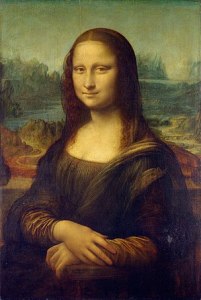 For most of his life, the European world recognized Leonardo da Vinci as a painter. In reality, da Vinci wasn’t a prolific painter. He painted sporadically and nominally as a side-line commission. Art experts at Christie’s auction in New York estimate that over 80 percent of Leonardo da Vinci’s paintings were lost over the years. Today, there are only 15 verified da Vinci paintings in the world including Mona Lisa, The Last Supper, and Annunciation. Salvator Mundi sold in 2017 for $450.3 million US.
For most of his life, the European world recognized Leonardo da Vinci as a painter. In reality, da Vinci wasn’t a prolific painter. He painted sporadically and nominally as a side-line commission. Art experts at Christie’s auction in New York estimate that over 80 percent of Leonardo da Vinci’s paintings were lost over the years. Today, there are only 15 verified da Vinci paintings in the world including Mona Lisa, The Last Supper, and Annunciation. Salvator Mundi sold in 2017 for $450.3 million US.
But Leonardo da Vinci was really prolific in his drawings and writing. His anatomical sketches, scientific diagrams, and thoughts across the spectrum fill volumes now held in private collections and public museums. Da Vinci’s unquenchable curiosity and feverishly inventive imagination consumed his waking hours. The world is extremely fortunate that many of Leonardo da Vinci’s notebooks still exist.
Da Vinci’s interest held no bounds. He was a true polymath who studied astronomy, anatomy, architecture, botany, engineering, science, music, math, language, literature, geology, paleontology, ichnology, painting, drawing, and sculpting. Leonardo da Vinci also invented. Concepts for the helicopter, parachute, and airplane wing came from da Vinci. He even built the first automated bobbin winder before the sewing machine came to be, and Leonardo worked with solar power, double-hulled ships, and even armored military tanks. He also thought out a robotic knight.
Unlike most innovators who are a fine line between nut and genius, Leonardo da Vinci was incredibly well-balanced on an emotional scale. Besides having an extremely high intelligence quotient (IQ), it’s said Leonardo had a tremendous emotional quotient (EQ) as well. Nowhere is there any suggestion he was an egomaniac or unapproachable. History indicates da Vinci was a pacifist, vegan, and humanitarian with a good sense of humor.
So what made Leonardo da Vinci so special? Short answer—his brain. There was something nearly out-of-this-world going on in da Vinci’s mind. And there might be a scientific explanation about what it was.
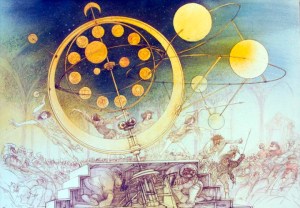 Twenty-first-century science knows a bit of how the human brain functions. But, it’s far from comprehensive knowledge. Science has almost no grasp or understanding of how human consciousness works, and there’s a good reason for that. Brain science is tangible where grey matter can be physically dissected and electrophysiological waves are recordable on computerized graphs. You can fund, study, and measure with reports.
Twenty-first-century science knows a bit of how the human brain functions. But, it’s far from comprehensive knowledge. Science has almost no grasp or understanding of how human consciousness works, and there’s a good reason for that. Brain science is tangible where grey matter can be physically dissected and electrophysiological waves are recordable on computerized graphs. You can fund, study, and measure with reports.
Consciousness is a whole different matter. Conventional science has no grip on what human consciousness—or any form of consciousness—really is because it’s non-tangible and can’t be defined within current terms. Because consciousness is slippery, it’s not fundable. There’s no money in it. You can’t measure to monetize it. So consciousness study is left to individual groundbreaking leaders like David Chalmers and Sir Roger Primrose… but back to da Vinci.
Leonardo’s Brain: Understanding da Vinci’s Creative Genius takes a really good look at how LDV’s brain activated his mind to tap into a higher state of consciousness—the world of “Forms”, as Plato termed it, or the source of where all “in-form-ation” sits. In current consciousness research, there’s a distinct difference between the physical brain, the non-physical mind, and the plane of infinite intelligence where all ideas come from.
Leonardo da Vinci’s brain was so evolved—author Shlain writes—that his mind easily accessed information not readily there for normal people. Da Vinci’s brain/mind power was so special that he “thought” his way to fantastic ideas. It also let da Vinci observe what was going on in the universe and record it. That might have been simplistic beauty as in the Lady With an Ermine, an anatomical analogy like Vitruvian Man or a geometric complexity seen in the Rhombicuboctahedron.
Despite Leonardo da Vinci being bright, talented, and affable, he was an outlier in the Renaissance period. Da Vinci was biologically different. He was a misfit in the world of conventional ideas and creativity. He thought different. He acted different. He dressed and talked different. That made others uncomfortable. Back then, da Vinci sat at the back of the bus, and today he’d still be so far ahead that the rest of us would see dust. Author Leonard Shlain tells us his version of why:
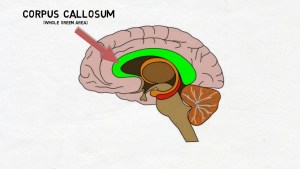 “Leonardo da Vinci’s left and right brain hemispheres were intimately connected in an extraordinary way. Because of a large and uniquely developed corpus callosum, da Vinci’s left and right sides constantly communicated and kept each other in the loop on observations and creative options. Each brain side knew what the other was doing, and this gave da Vinci’s mind unprecedented and unrestricted freedom to observe, understand and create.
“Leonardo da Vinci’s left and right brain hemispheres were intimately connected in an extraordinary way. Because of a large and uniquely developed corpus callosum, da Vinci’s left and right sides constantly communicated and kept each other in the loop on observations and creative options. Each brain side knew what the other was doing, and this gave da Vinci’s mind unprecedented and unrestricted freedom to observe, understand and create.
In current brain science, the left hemisphere is the analytical and conservative side. The right is the creative, liberal sphere. Brain scientists think that’s nature’s safety mechanism to prevent humans from getting too stupid or smart in either extreme. Da Vinci’s brain seems to have found the middle ground—the apex of the triangle or the tip of the see-saw.”
In Leonardo’s Brain: Understanding da Vinci’s Creative Genius, Leonard Shlain backs up his theory with facts. The most interesting fact supporting da Vinci’s left/right corpus callosum uniqueness is his handiness. Leonardo da Vinci was a southpaw—he was left-handed.
Left-handers aren’t that unusual in the human population. Studies show approximately 8-10 percent prefer left-hand prominence. A tiny proportion are ambidextrous, but the vast majority have manual-dexterous abilities with their right. However, there are unusual advantages south-paws have. They tend to be far more creative than right-handers.
It’s no news the left side of the brain controls the right side of the body—same with vice-versa. When one hemisphere is dominant over the other, a person is usually analytical or creative. But, when both sides are equally balanced, something phenomenal happens.
Anatomically, the corpus callosum—aka the callosal commissure—is a wide and thick nerve bundle sitting at the brain’s foundation. It’s the largest white matter brain structure that binds the left and right gray matter. The corpus callosum isn’t big. It’s about 10 centimeters or 4 inches long. Neurologically though, it’s huge—having about 250 million axonal projections.
The corpus callosum regulates electrical activity happening in the left and right brain sides. It’s got a big job to do. One of its jobs is responsible for the primordial fight-flight response ingrained in all of us. But the corpus callosum also lets humans get imaginative, like the right brain inventing tools to slay saber-toothed tigers while the left side stays alert.
 The Leonardo’s Brain: Understanding da Vinci’s Creative Genius book goes beyond a left/right brain dichotomy. It delves deep into something uniquely known about da Vinci’s left-handedness. Leonardo da Vinci’s brain let him write left-handedly in a mirror image. Da Vinci’s writings, notes, and diagram annotations have him writing right to left where you need a mirror to decipher them.
The Leonardo’s Brain: Understanding da Vinci’s Creative Genius book goes beyond a left/right brain dichotomy. It delves deep into something uniquely known about da Vinci’s left-handedness. Leonardo da Vinci’s brain let him write left-handedly in a mirror image. Da Vinci’s writings, notes, and diagram annotations have him writing right to left where you need a mirror to decipher them.
This mirror-image phenomenon provides profound insight into Leonardo da Vinci’s psyche. Here was a poor boy without formal education who developed his own style independent of traditional academic influences—even choosing which hand to use and how to communicate with. Da Vinci was the poster boy of self-taught, self-investigating, and self-assured individuals—the likes the world never experienced in his time or so-far thereafter.
Leonardo da Vinci’s lack of indoctrination by limiting dogma taught through conventional institutions like the church and its lap-dog societal constraints liberated him from mental restraints. Combined with perfect neuro-equilibrium between inquisitive left and creative right brain functions, da Vinci broke free of earthly bounds and set his mind soaring into airy lofts not there for common minds.
Author Leonard Shlain of Leonardo’s Brain: Understanding da Vinci’s Creative Genius makes another interesting observation and conclusion. Because da Vinci was removed from his biological mother’s hold so early, he became mentally self-reliant. Da Vinci was also gay or at least asexual. He wasn’t driven by a common male preoccupation with the little head thinking for the big one.
Brain science recognizes that “normal” human brain thoughts primarily focus on survival concerns like food, shelter, and sex. That didn’t seem a factor with Leonardo as he progressed in life. He just abnormally sensed reality. Then he painted, sketched, or wrote what he knew.
No, Leonardo da Vinci was much more than “normal”. He was the prime exemplar of a universal genius whose brain far out-thought humankind. Looking back… and forward, if da Vinci showed up for a job interview, his unique selling proposition on his resume would be “I have an unusual brain and my mind knows how to use it”.
That’s the astounding secret behind Leonardo da Vinci’s creative genius.
What about you Kill Zoners? Have you read this book or anything on Da Vinci? And as for your own creative genius, what’s your secret sauce?
— — —
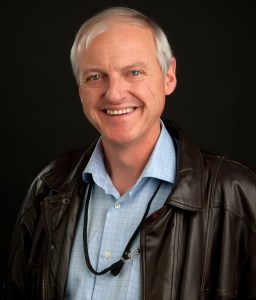 Garry Rodgers’s creative genius was his ability to fool the authorities into keeping him employed as a homicide detective and coroner for over three decades. Now, he’s managed to hoodwink the public into believing he’s a competent crime writer.
Garry Rodgers’s creative genius was his ability to fool the authorities into keeping him employed as a homicide detective and coroner for over three decades. Now, he’s managed to hoodwink the public into believing he’s a competent crime writer.
Part of this ploy of deception is Garry’s blog on the DyingWords.net website. He has another ruse where you can follow him on Twitter @GarryRodgers1. By the way, Garry Rodgers may or may not be his real name. Same with the headshot.

Great post, my friend. Of course, no surprise there.
Thanks Harvey! Oh, to have only .0001& of Da Vinci power.
This is terrific reading, Garry. Thank you. I will be coming back to this all day and taking the time to check out the source material.
You reminded me that National Lampoon published the theretofore undiscovered notebooks of Leonardo Da Vinci which included such things as a prototype for a whoopie cushion (it wasn’t called that).
Your discussion of consciousness also brought to mind Kurt Godel’s statement that “The bicycle cannot explain itself.”
We surely don’t know everything…and probably cannot….
A belated hello, Joe. “The bicycle cannot explain itself” is much like the watchmaker argument. Pretty tough to explain the design intelligence behind the human body. I never came away from an autopsy without reflecting on the phenomenal complexity of the human body. Enjoy what’s left of the day!
Very, very interesting post, Garry. Thanks for all the information and the link to Leonardo’s Brain. I look forward to checking it out.
Have a creative end of the week!
Good evening, Steve. And it is evening already here on the west coast. The book is fascinating – at least I found it fascinating. Make sure to have a look at it.
Good morning, Kill Zoners. WordPress has been difficult on my end for some time now. I can’t open a post on my browser for at least a day after it’s gone live, and the platform won’t let me reply to comments now. I can read your comments through my email alerts but I can’t enter the comment system at all. So I know this Da Vinci post is up and running – please don’t think I’m being rude by not replying. I’ll certainly do so when I can.
I’ve not been receiving emails when a new post goes live; can’t see others’ comments; and when I “like” a post or comment, WP plants an “unlike” instead. For the last several weeks…very frustrating.
I can access on my phone and everything works, but my dang phone is so tiny these old eyes can barely read it.
I hope an administrator is reading this…
I’ve been having the same problem with “likes” here on TKZ. The thumbs for the post of the day and random comments are red as soon as I arrive at the page. I can’t tell if WordPress has arbitrarily decided I enjoyed the post or if I’m not making my pleasure with the post known because I don’t want to take away a “like” by clicking on the red thumbs. Hope the problem resolves itself soon.
“Red thumbs.” Hmm, sounds like the start of a horror story.
“I dithered over deciding my next action. Red thumbs showed up everywhere I went. Were they a warning about some unperceived danger? At least each I’d seen so far was upturned. I dreaded the moment I caught sight of the first downturned digit, dripping a bloody trail across the page.”
I never get email alerts either, Deb, except for alerts when a comment arrives on my posts. So, I just make it #4 on my morning stop to Google the KZ site and read the newest thoughts. Third stop is Facebook. Second stop is my email. First stop is the bathroom.
I got things to work today by fooling around on the site. Don’t ask me what I did specifically; I don’t remember. I did unlike some likes and then change them right back. I also hit the “previous” link and returned. I also put my tongue between my left molars and whispered a very short poem that starts: “Week after week, month after month . . .”
I’ve been experiencing similar problems with WP, including those described by Deb and Suzanne (and the dreaded red thumbs!). TKZ used to arrive every morning in my email. Now it’s sometimes a couple of days late and comes in the afternoon or evening.
I usually have to access TKZ via Google.
Garry, my high-priority a.m. task are: 3. TKZ; 2. Coffee; 1. Bathroom.
Right, Debbie. Coffee. Got one beside me right now. 🙂
I excel at being a pain in the ass. If I could only put that energy into writing I would be a #1 best seller all year. I really liked the article, thanks for perspective.
I bet you’re an excellent pain in the ass, Ben. Glad you liked the piece and go forth and multiply.
Interesting speculations here, Garry. There are just some instances where special brains meet the right circumstances to produce genius. Bobby Fischer in chess, for example. Poor kid, learns the game at age 6, and is in the right New York milieu to prosper—which he did because he also had an almost maniacal focus on the game. This suggests that perhaps DaVinci might have left us more great works of art had he focused more on painting. Indeed, his mind went “everywhere” but is that always a positive? Might it sometimes be like stuck in a meadow of psilocybin mushrooms?
And the “lack of indoctrination by limiting dogma” argument is double-edged. The counterargument would be that great and lasting art requires a disciplined focus and a vision of divine beauty. What may be the greatest work of art (in any form) ever created is The Divine Comedy by Dante. One could posit that what some call ecclesiastical “mental restraints” were, for Dante, actually his gateway for mental flourishing and his classic creation.
So the “secret sauce” is variable, IMO. It’s a mix of what you’re born with and how you use what you’ve got…and ultimately what’s important to you. If writing good books is, focus on it. Ken Kesey was well on his way to great literary career…great brain…but LSD took his mind to an “everywhere” place and he wrote virtually nothing afterward. Remember what it said on the front of the famous Merry Prankster bus? FURTHER. But was that “further” ultimately a positive direction?
As you see, you’ve got my own mind firing this early morn…thanks, Garry! And I hope you can figure out the WordPress problemo.
Nice to hear your neurons are snapping soundly, Jim. From reading this thoughtful and highly-intelligent reply, I’d say you spent little, little time in the mushroom field or hanging with Timothy Leary.
Fascinating post, Garry! I knew few specifics about Leonardo Da Vinci’s genius. I absolutely have to read this book. He was truly unique.
My own creativity is nowhere near as monumental or world-altering. I say the “secret” is understanding creating something is greatly helped by practice and internalization. I was introduced to this idea when I took an eight-week fiction writing class called “Become Your Own Story Doctor,” back in 2008. Taught by the always insightful Eric Witchey, the class focused on breaking down elements of fiction, such as scene, tension, POV etc.
We’d then practice one point daily for a week, both consciously–say, outlining a scene, and subconsciously, coming up with 3 story prompts and writing as fast as possible for 15 minutes, no editing, no stopping, to help your subconscious internalize the craft point. The conscious and subconscious exercises took no more than 15 minutes each, and could be done together or a different times of the day.
The subconscious “at speed” writing exercises, coupled with the conscious practice ones, produced results, and weeks later, you’d be able to create an effect or handle a point of craft while immersed in creating the story because you’d internalized it.
Hope WordPress stops bedeviling you ASAP.
Thanks for another great post!
Thanks so much for sharing your class experience, Dale. I’ve done a lot of online study but have to say I haven’t experienced an in-person workshop. Bucket list….
“Creating something is greatly helped by practice and internalization.” I couldn’t agree with you more. It’s the old practice-makes-perfect but that only works best when the practicer goes into it with a darn good handle of how to properly get it done. Except maybe DaVinci. Man that man was brilliant!
Worth investigating!
So, if I may, a number of things bounced around the old-brain-pan, partly in response to YESTERDAY’S post as well…
● “What if…” Leonardo suddenly appeared here and now – the old “time-travel” trope, but his response(s) to how we responded to his brainstorming… ?
● “What if…” someone Jurassic Parked da Vinci DNA… theoretically, he’d have the same brain structure, but how would that brain respond to the 21st century… ?
● “What if…” Leonardo really WAS an “alien” from the great beyond… ?
Now, to work on the “Whys and Hows…” ?
I love the way you think, George. “What if…” That’s probably the biggest Kickstarter to creativity – writing, painting, sculpting, acting, architecture, you name it.
Your Da Vinci vs Jurassic Park scenario is a could-happen situation, technologically above a what-if. If Leonardo’s physical remains could be exhumed – even though he’s been decomposed for 500 years – his DNA would likely be recovered from encapsulated bone marrow or teeth pulp. A perfect profile would be easy to develop and the the cloning process is no longer sci-fi.
The big question is if his intelligence would be the same. No one knows, but it’d be fun to try.
Good morning, Garry! I loved this article. Fascinating information and very interesting about DaVinci’s corpus callosum. It makes sense, but I wonder how Shlain came up with the data.
I am definitely on the analytical side, but trying to build some neurological bridges to my creativity. Writing seems to be a good way to keep the traffic flowing in both directions.
I hope you can solve the WP issue. I have two laptops that see all the comments and one that doesn’t. Too bad DaV doesn’t work at WordPress. I bet he could figure it out.
Now there’s an idea, Kay! If only I could invite him to my office and have him fix my TKZ/WP issue. I wonder why some of us are experiencing it and others aren’t…
Hi Kay and thanks for the info on our emails. No idea why WordPress has indigestion here when my home blog is comfortably regular.
Shlain meticulously lists his sources in footnotes. It was a bit of a chore to narrow down his entire book into a 2K post, but I came away from the book convinced he’d done his author homework and presented a convincing case of brain science.
Phenomenal post, Garry! I wonder what kind of thriller novels LDV could have written had he had the urge. I bet they would’ve been so good, no one would ever have been able to figure out the ending before they arrived at it.
The human body is truly a miracle…and I believe science will never be able to plumb it to its depth.
(Unless LDV is involved in the research, of course!) Thanks for the brain wake-up post this morning, and happy Thursday… 🙂
I wonder if JSB is LDV reincarnated. Just sayin’, Deb.
Fascinating research, Garry! Thanks!
I like George’s idea of Jurassic Parking Leonardo’s DNA. I’d gladly settle for a few of his extra brain cells, although it sounds like he used every single one of them to their highest potential.
Can you imagine attending a Leonardo writing workshop, Debbie? My Google Translate would be on full volume.
Utterly fascinating. Especially since he worked with our Grandda on the Heavenly-Rotory-Flying-Gimlet!
Like Grandda used to say, “If you’re going to screw something, screw it up!”
Top o’ the evenin’, Mr. Leprechaun. About ten years ago, a Da Vinci exhibit came to my town. There was only one original artifact – a drawing – in it, but it was full of recreations of his art, writing, inventions, and on and on… Mindblowing! Just utterly mindblowing what that man envisioned and accomplished.
“If the human brain were so simple that we could understand it, we would be so simple that we couldn’t.” — Emerson Pugh,
There are two schools of thought on brain structure. Make that three. No, heck, there are probably a dozen. It seems as if there are slight differences between the hemispheres, one often being a bit bigger than the other, but generally both sides are in play, as determined by resting-state functional connectivity magnetic resonance imaging (rs-fcMRI):
“This popular notion was debunked in 2013 by University of Utah neuroscientists who used brain imaging to show there is NO evidence that people are ‘right-brained’ or ‘left-brained’.” –DrSarah McKay.com.
(The male auxiliary brain is, of course, located in the scrotabellum, where some of our best thinking is done. Both spheres are identical in size, usually.)
There is duality in the brain, but not of the left-right sort. As Robert Louis Stevenson said, “…man is not truly one, but truly two.” RLS based his novel on an actual case, that of Louis Vivet (1885). More on that later.
Superb article, Garry. I had very little knowledge about DaVinci. I couldn’t help but wonder about my mother, who was also ambidextrous and insanely brilliant. The brain is so fascinating, isn’t it? Never ceases to amaze.
I remember you telling me about your mother, Sue. Very sad that she passed away so early. So sad.
Yes, the brain is truly fascinating as well as all the human body systems and how they interact. I never came away from an autopsy without a sense of awe as to what incredible intelligence is behind the design. And what really fascinates me as I get older is consciousness. That’s a realm all its own. Enjoy your day, BFF!
Yes, consciousness is perhaps the ultimate conundrum, one we may never solve, one whose study has the aura of omphaloskepsis about it.